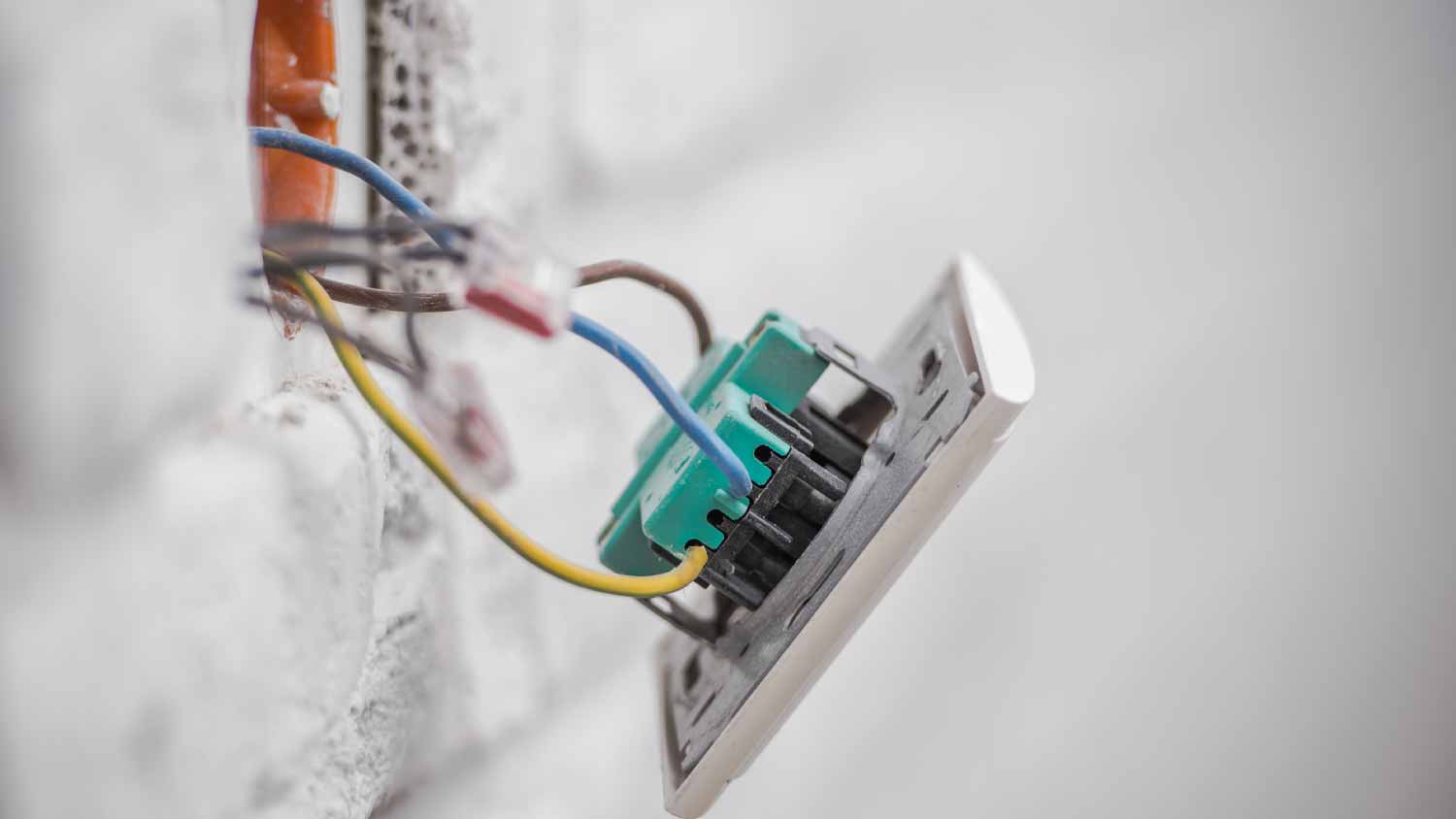
The cost to install a 240-volt outlet varies depending on the amperage and the home’s current wiring conditions. Use this guide to budget for your next project.
One electrical system protects while the other connects


Grounding links to earth rods or pipes, while bonding links metal components together.
Grounding stops stray electricity; bonding prevents shocking surprises.
Bonding is often less expensive to install and lasts longer than grounding.
Wondering about the difference between grounding and bonding? Grounding is a system installed in the ground (hence the name) to carry away stray electricity, while bonding is an electrical process that links metal parts together to prevent dangerous voltage differences.
Understanding the differences between grounding and bonding can help keep your home, and loved ones safe, while making it easier to follow proper electrical practices.
Grounding and bonding are both safety measures, but grounding handles stray electricity, and bonding prevents shocks from touching multiple metal parts. If you’re weighing both options, here’s how they measure up in terms of type of wiring used, durability, location, and cost.
| Type of Difference | Grounding | Bonding |
|---|---|---|
| Materials | Copper pipes, rods, plates | Copper, aluminum, metal parts |
| Durability | Less durable | More durable |
| Location | Reaches out to the Earth | Connects internally |
| Cost | More expensive | Less expensive |

Grounding and bonding serve distinct roles in electrical systems. Understanding the materials and safety functions of grounding versus bonding helps ensure a secure and reliable electrical setup.
The materials used for grounding and bonding differ based on their purpose and exposure. Grounding typically uses copper or copper-clad steel rods, ground plates, or buried water pipes, along with green or bare copper grounding wire, designed to withstand corrosion and outdoor conditions.
Bonding usually employs copper or aluminum wires, metal straps, or clamps to connect metal parts within a system, often indoors or in protected areas. While both rely on conductive materials, grounding components are built to endure soil and moisture, whereas bonding focuses on securely linking existing metal parts.
Bonding ensures all metal parts are at the same electrical potential, preventing dangerous voltage differences that could cause shocks when touching multiple conductive surfaces. Grounding protects people and equipment by providing a direct path for stray electricity to flow into the earth, reducing the risk of shocks or fires from faults or lightning strikes. Though different, together they create a safer electrical system while addressing different hazards.
Grounding an outlet typically ranges from $100 to $300, including labor and materials. This process involves running a new ground wire from the outlet to the main electrical panel. For older homes lacking grounding, the cost to install grounding can range between $200 and $500. However, if extensive rewiring is required, costs can escalate to $2,000 to $10,000, depending on the home's size and complexity.
Bonding electrical components, such as connecting metal parts to ensure they share the same electrical potential, is typically less expensive than grounding, but specific costs can vary based on the project's requirements.

Grounding involves a connection from the electrical system to the earth, such as a ground rod driven into the soil or a metal water pipe, often located outside or near the main service panel.
However, bonding occurs inside the system, connecting metal parts, enclosures, pipes, or structural components to ensure they share the same electrical potential. In short, grounding reaches out to the earth, while bonding ties everything together internally. If you’re still stumped on which application is best for you, contact your local electrician for an inspection.
Grounding systems, especially those with rods or plates buried in soil, are exposed to moisture, soil chemistry, and corrosion, which can gradually degrade metal components over time.
Bonding connections are often made between internal metal parts or structural components, so they are usually protected from the elements and tend to remain stable and reliable for longer periods. Proper installation and periodic inspection are essential for both, but grounding systems generally require more attention to maintain long-term effectiveness.
From average costs to expert advice, get all the answers you need to get your job done.

The cost to install a 240-volt outlet varies depending on the amperage and the home’s current wiring conditions. Use this guide to budget for your next project.

Discover the cost to replace outlets in your home. Learn about price factors, labor rates, and tips to save on your outlet replacement project.

Looking to size up your electrical system to cover higher usage and improve efficiency? Use this guide to see the cost to upgrade an electrical panel.

If you want to move an outlet, follow these steps or hire an electrician to work through the process. Read on to learn more.

Expand the power of your DIY skills. Learn how to extend electrical wires and add a new fixture or install a new outlet.

If you want to upgrade outdated outlets, you may be wondering if you can replace ungrounded outlets with GFCI outlets. Keep reading to find out.